Self-driving tourists searching the map for alternatives to Provincial Highways 9 and 11 — East Taiwan’s principal inland and coastal arteries, respectively — may find their eyes drawn to Road 197 in Taitung County.
This stunning back-country route, known as “County Road 197” (縣道197), connects the outskirts of Taitung City with the rice-growing township of Chihshang (池上).
It offers some of the most unspoiled landscapes that can be seen from a car window anywhere in Taiwan. If you don’t own a car, it’s an excellent reason to rent one. But you should be a fairly confident driver in a vehicle with plenty of ground clearance. Also, it’s best if the weather has been dry for at least few days.
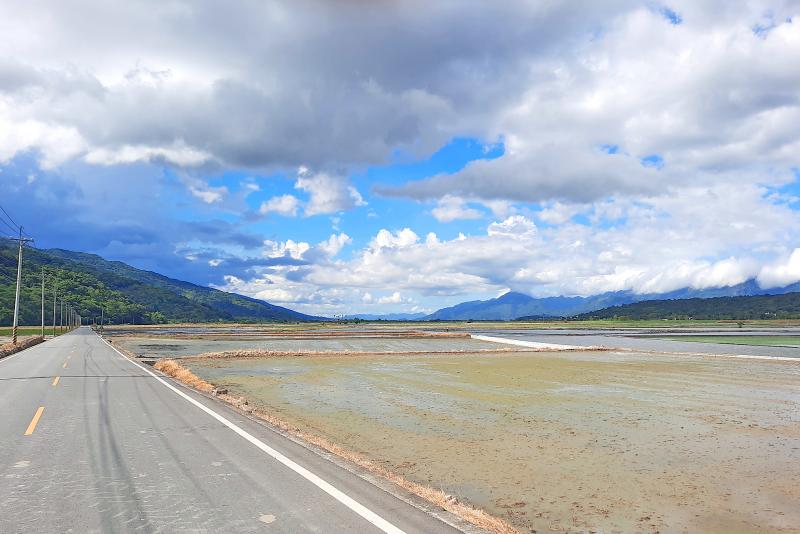
Photo: Steven Crook
We’d previously cruised the southern half of Road 197, but not the section which scares off some motorists. That stretch of road is the only one in the country that’s graded as a highway, but paved with gravel rather than asphalt or concrete.
A few decades ago, all but the busiest rural roads were unsealed. As an article on the Chinese-language Web site Readmoo (讀墨) points out: “Even when the highways in the mountains and the east had been paved with asphalt, one stretch of road kept its original gravel, as if time had frozen. It was 197.”
I asked the Ministry of Transportation and Communications’ Directorate General of Highways (DGH) why 197 hasn’t been entirely sealed, and if there are any plans to upgrade the surface. The DGH forwarded my inquiry to Taitung County Government, which is responsible for the road’s upkeep. At the time of writing, the local government hadn’t responded.
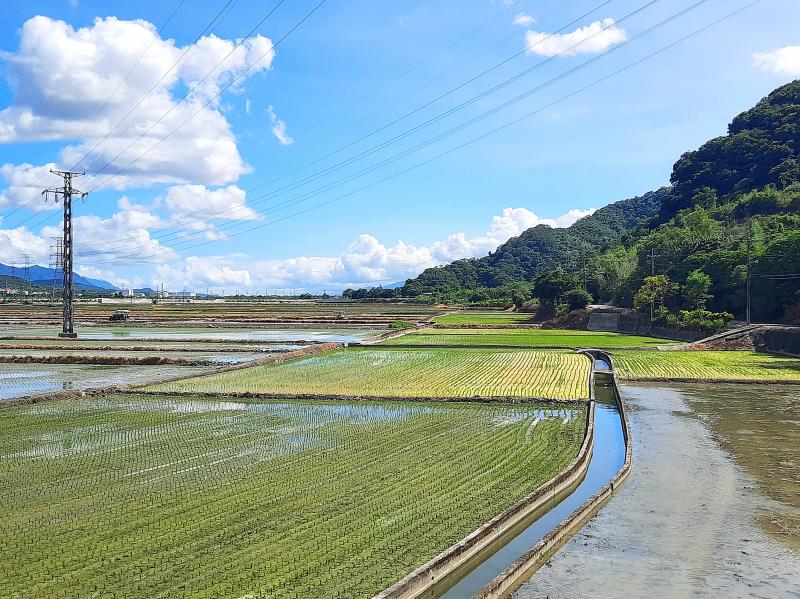
Photo: Steven Crook
The Readmoo article offers two explanations for the continued existence of 197’s gravel section. The first is geological: The land is fragile; repairs often have to be made, and doing so with gravel is cheaper and easier than resurfacing with asphalt. The second is cultural: It should be kept as it is because it’s a “living fossil,” as significant to the history of road transportation as steam locomotives are to the history of rail.
However, not everyone who experiences 197 becomes a fan. In 2014, a Chinese-language blogger complained that “the gravel makes the wheels slip, making driving notoriously difficult.” And a few years ago, I met a pair of German travelers who said they’d had no idea what they were getting into.
Exploring Taiwan on a tandem bicycle, the couple had decided to proceed north from Taitung via 197. Unable to read Chinese, and assuming the entire road would be like others they’d encountered in Taiwan — steep in places but smooth enough for cycling — the pair began pushing their bike when they reached the unpaved section. Guessing that a short stretch of the road was undergoing repairs, they pressed on.
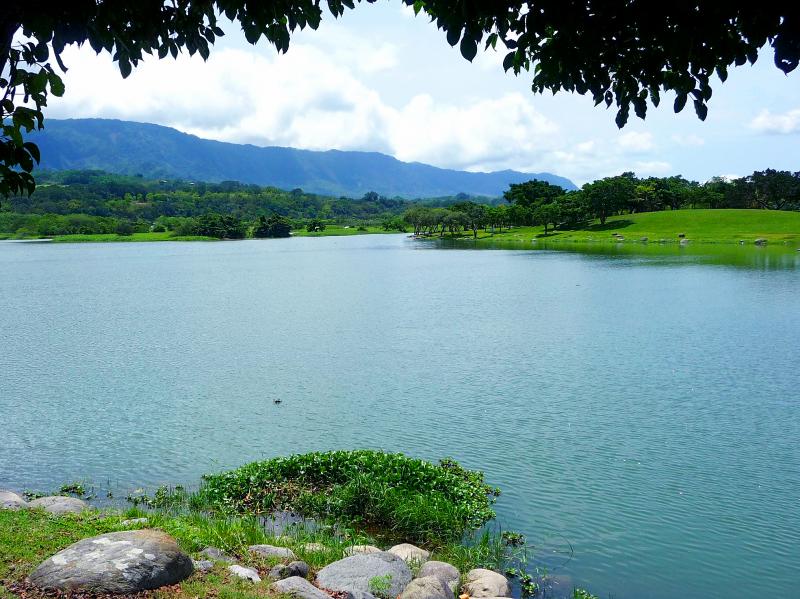
Photo: Steven Crook
Fourteen kilometers later, footsore and hours behind schedule, they reached the entrance archway to Baohuashan Tsuhuei Temple (寶華山慈惠堂). They felt huge relief when they realized that the downhill stretch before them had a properly sealed surface.
Emboldened by the advice of friends, who assured me there was no serious risk we’d damage our car or get stuck, we added 197 to this summer’s East Taiwan family jaunt.
The road’s kilometer markers start from the north, but we began at the opposite end, within earshot of Taitung’s air force base. Where 197 joins Provincial Highway 11A, a sign states the length of the former down to the last meter: 59.670km.
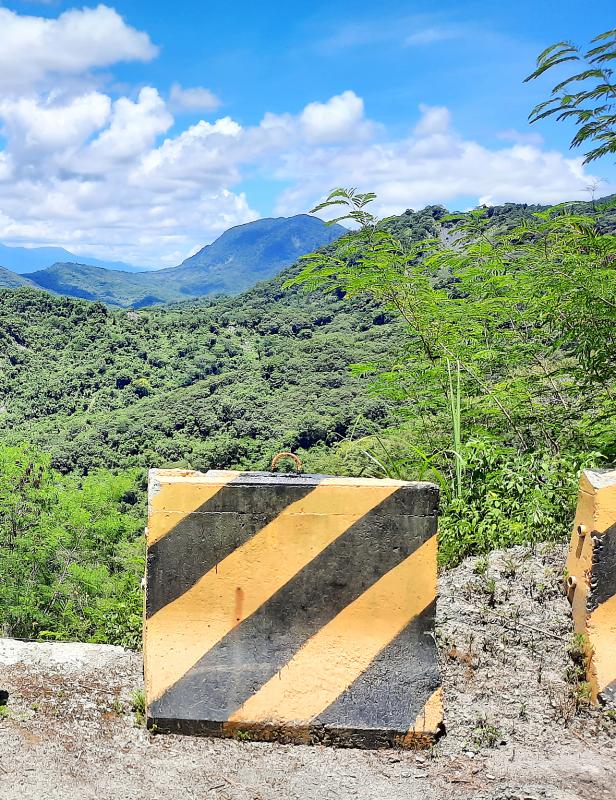
Photo: Steven Crook
The southern end of the road is about 50m above sea level. From there, it’s a steady climb. Just north of the 57km-marker, we halted at an earth-god shrine that offered superb views southward over Taitung City and the estuary of the Beinan River (卑南溪). To the north we could see Dulan Mountain (都蘭山) and the state-owned forests which cover its slopes.
A few kilometers further on, we halted to look down on Little Huangshan (小黃山), a row of eroded cliffs on the far side of the Beinan River. This attraction got its current name because someone thought it resembles Huangshan in China’s Anhui Province. Isn’t it time Taiwan ditched homage-to-China place names like these, and restored indigenous toponyms?
Abangan Earth God Shrine (阿邦安福德祠), on the left if you’re driving north, is a good spot to gaze across and along the valley. A few kilometers beyond the shrine, spread out either side of the 41km-marker and between 160m and 400m above sea level, Luanshan (鸞山) is the only village of significance on 197.
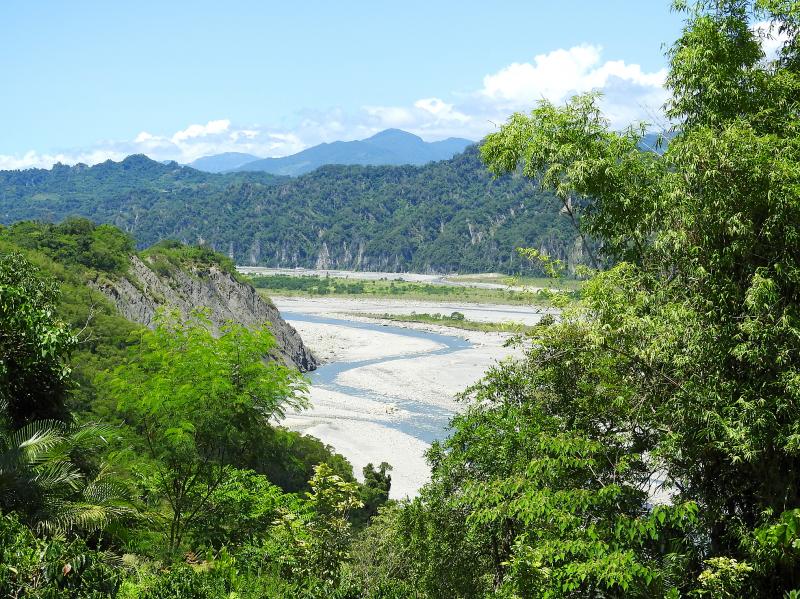
Photo: Steven Crook
At the 37km-marker, a Chinese-only sign announced: “14km of gravel road; please be careful and drive slowly.” As we crept along, it was obvious that the absence of asphalt doesn’t mean the road isn’t maintained. In addition to mirrors on tight bends, and bollards where a vehicle could go over the cliff, there are km-markers and drains.
Even though the long grass beside the road looked like it’d been recently cut back, the surroundings were blissfully verdant. This part of Luye Township (鹿野鄉) is utterly unpopulated. I can’t remember if we met three cars during the 100 minutes we spent negotiating the gravel section. It may have been just two.
Our progress was slow, and not just because we wanted to make the most of the scenery. The final few kilometers of the unsealed stretch are especially steep, twisting and rutted.
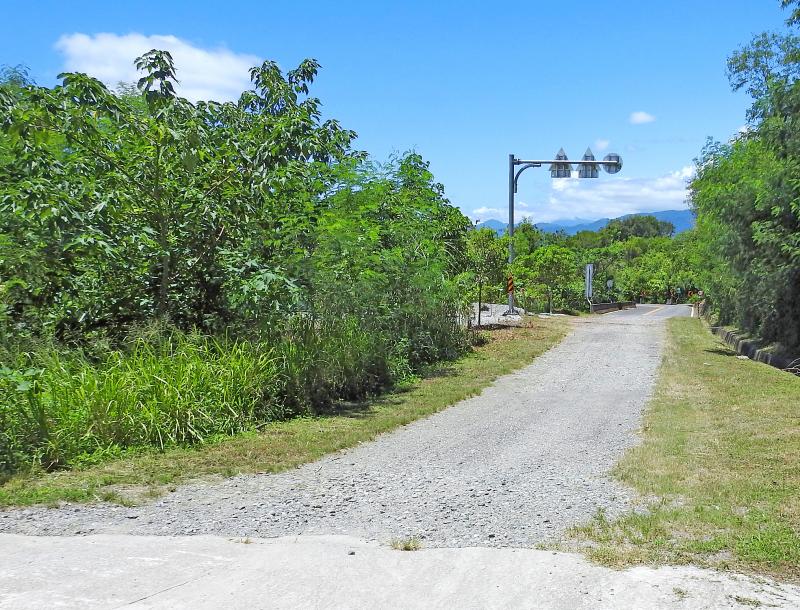
Photo: Steven Crook
Once past the turnoff to Baohuashan Tsuhuei Temple, the remaining 23km — past Dapo Pond (大坡池) and into central Chihshang — were smooth and delightful. Germans who’ve just spent hours pushing a tandem bike might disagree, but for me this final stretch was something of an anticlimax.
We didn’t know that the day would offer us one more gorgeous stretch of road. Aiming to stay away from thoroughfares we’d seen before, we headed toward Hualien City on Jhuofu Road (卓富路), which runs parallel with Provincial Highway 9.
Jhuofu Road took us about 22km from the northwestern edge of Chihshang to Yuli (玉里), where it meets Provincial Highway 30. Unlike Road 197, it’s more or less flat. As someone used to Taiwan’s crowded western lowlands, the sense of spaciousness I felt here was magnificent. I’m determined to come back on a bicycle, and take it very slowly indeed.
Steven Crook has been writing about travel, culture and business in Taiwan since 1996. He is the author of Taiwan: The Bradt Travel Guide and co-author of A Culinary History of Taipei: Beyond Pork and Ponlai.

The canonical shot of an East Asian city is a night skyline studded with towering apartment and office buildings, bright with neon and plastic signage, a landscape of energy and modernity. Another classic image is the same city seen from above, in which identical apartment towers march across the city, spilling out over nearby geography, like stylized soldiers colonizing new territory in a board game. Densely populated dynamic conurbations of money, technological innovation and convenience, it is hard to see the cities of East Asia as what they truly are: necropolises. Why is this? The East Asian development model, with

June 16 to June 22 The following flyer appeared on the streets of Hsinchu on June 12, 1895: “Taipei has already fallen to the Japanese barbarians, who have brought great misery to our land and people. We heard that the Japanese occupiers will tax our gardens, our houses, our bodies, and even our chickens, dogs, cows and pigs. They wear their hair wild, carve their teeth, tattoo their foreheads, wear strange clothes and speak a strange language. How can we be ruled by such people?” Posted by civilian militia leader Wu Tang-hsing (吳湯興), it was a call to arms to retake

This is a deeply unsettling period in Taiwan. Uncertainties are everywhere while everyone waits for a small army of other shoes to drop on nearly every front. During challenging times, interesting political changes can happen, yet all three major political parties are beset with scandals, strife and self-inflicted wounds. As the ruling party, the Democratic Progressive Party (DPP) is held accountable for not only the challenges to the party, but also the nation. Taiwan is geopolitically and economically under threat. Domestically, the administration is under siege by the opposition-controlled legislature and growing discontent with what opponents characterize as arrogant, autocratic

When Lisa, 20, laces into her ultra-high heels for her shift at a strip club in Ukraine’s Kharkiv, she knows that aside from dancing, she will have to comfort traumatized soldiers. Since Russia’s 2022 invasion, exhausted troops are the main clientele of the Flash Dancers club in the center of the northeastern city, just 20 kilometers from Russian forces. For some customers, it provides an “escape” from the war, said Valerya Zavatska — a 25-year-old law graduate who runs the club with her mother, an ex-dancer. But many are not there just for the show. They “want to talk about what hurts,” she